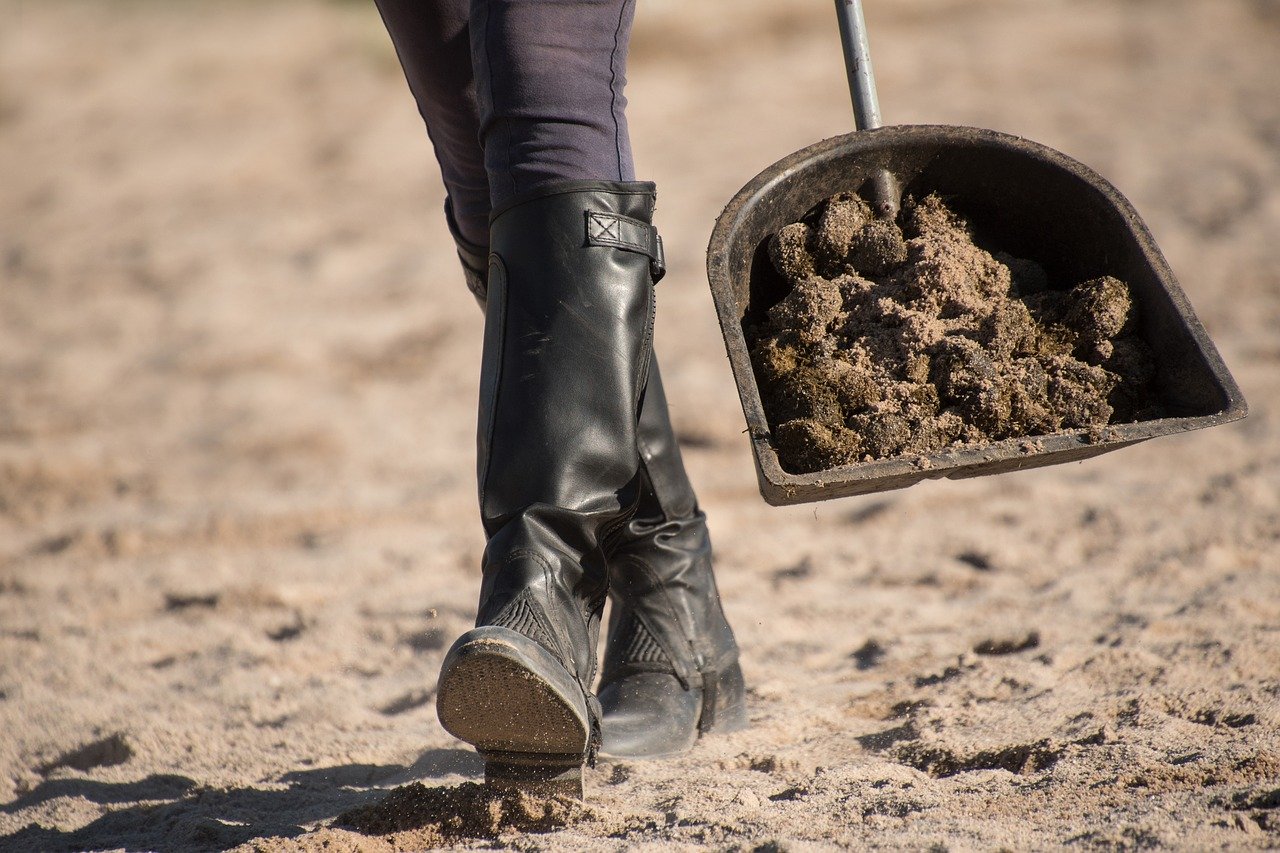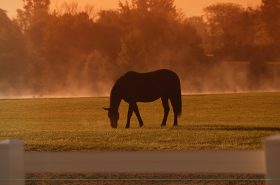Dealing with horse poop is a day-to-day occurrence for horse owners. We scoop it, we dump it, and we forget about it–for the most part. But have you ever taken a close look at your horse’s manure? It can actually tell you quite a bit about their overall health.
Normal Horse Poop
Every horse is different and their diets vary, so not all horse poop will look the same. However, it’s important to determine what is ‘normal’ for your horse so that if a change does occur, you’ll be aware of it.
Note the consistency, color, appearance, and size, as well as the frequency of passing manure. The average horse poops about 10-12 times per day and a reduction in frequency could be a sign of colic.
Consistency
Dry, hard manure, small manure balls, or manure covered in mucous are all signs of constipation, which is linked with colic. If your horse’s manure looks like this, watch him closely as you may need to call your vet.
Loose, wet manure can occur for several reasons including stress, changes in diet, and eating new spring grass. Antibiotic use can also cause loose stools. As long as the horse doesn’t consistently have loose stools, however, this isn’t a major cause for concern.
Diarrhea is different from loose manure and should be a cause for concern. If the horse’s manure is liquidy and foul-smelling, this usually indicates illness, infection, or could be the result of eating a toxic plant. Don’t hesitate to call the vet if your horse has diarrhea.
Color
Horse poop can vary in color according to the diet. Shades of greens and brown are most common, but if your horse eats a large amount of beet pulp, his poop may be a reddish-brown color.
If your horse’s poop is red or black, this is a cause for concern. Red poop can indicate bleeding in the lower intestinal tract, while black poop, although very rare, could mean that there is bleeding further up in the digestive tract.
Appearance
Healthy manure consists of moist, well-formed balls. Seeing small pieces of hay or grain in manure is normal, but there are a few things you might notice that are not normal. The following indicate a need for intervention:
- worms in poop;
- large or undigested feed particles (could be dental-related); or
- gritty appearance (could be sand ingestion).
Once you are familiar with your horse’s poop, you never ignore changes in it. As many of us know, horses have a very delicate digestive system, and poop is a good indicator of what is going on in there.




